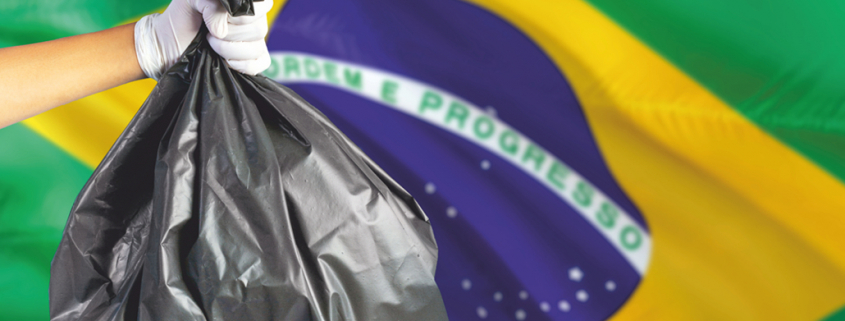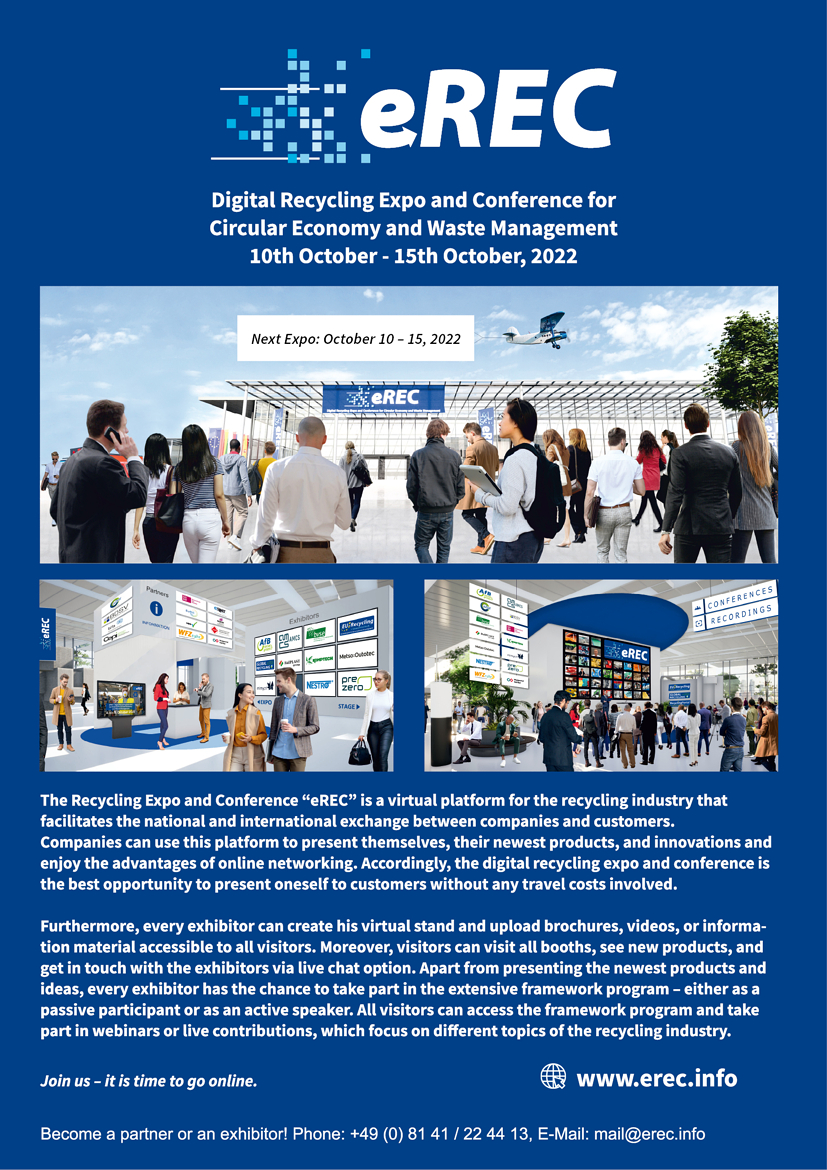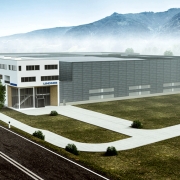Waste-to-Energy Technology in Brazil: On a Massive Transition into the Future
Twenty years ago, an academic paper registered “Barriers to Implementation of Waste-to-Energy Technologies in Brazil”. The list included lack of funds, spoke of an absence of consistent national policy and legislation, argued with the deficiency of detailed data collection and assessment, criticized higher direct investment costs and mentioned the public belief that WtE is worse than composting. What has changed in this sector ever since?
A snapshot of Brazil’s installed energy production capacity in 2015 shows that of 140 GW nearly 92 GW depended on hydropower, “characterized by large reservoirs distributed over a complex geography comprising various river basins”. The percentage of Waste-to-Energy has not even been amounted to, and the appropriate plants were too inflexible to be dispatched when other reservoirs were at a low level or not available. The WtE technology did not play any role. A research paper published at the Waste-to-Resources Symposium 2017 sought for reasons and attested “a signifi-cant lack of technical knowledge about processes and technologies in the majority of city administrations”. The consequence: “Most cities are not capable of elaborating waste characterizations nor waste management plans or at least evaluate the potentials for waste treatment facilities other than landfilling”. A report in March 2018, launched by the World Bank Group, found other factors: “Waste-to-energy projects face some political opposition, especially from those who fear that these facilities will cause waste-pickers to lose their livelihood. Waste incineration and energy recovery is deemed too expensive for Brazil’s market.” But the paper also prognosticated: “Increased energy prices, end-of-life sanitary landfills, and lack of room for new sanitary landfills could make incineration economically feasible in the future.”
A handful of biogas plants
According to a presentation at the Waste-to-Resources Symposium 2019 in Hannover, the most common WtE technologies in Latin America and Caribbean countries – technically and economically proved to be feasible – are biogas production from landfills, anaerobic digestion for agro-industrial wastes, industrial refuse-derived fuel and “some successful cases of pyrolysis”. Actually, for Brazil, two landfills in São Paulo are reported to generate gas for producing electricity. In 2017, the Caieiras Landfill had installed 29,5 MWe and the Bandeirantes Landfill 20,0 MWe; the Salvador Landfill at Bahia with 19 MWe capacity was concluded in 2011. Sergio Guerreiro Ribeiro, President of WtERT Brasil, underlined then most sanitary landfills in Brazil burned the biogas in flares – by incineration without energy generation. Newly, the park of waste recovery technologies in Brasil is expanded by three mechanical treatment plants turning municipal waste into alternative fuels with a capacity of 750.000 tons per year. And it will be enlarged by another incineration plant of 300.000 tons and several composting plants with 90.000 tons capacity planned.
Co-processing technique since 1992
Votorantim Cimentos – in its own words “one of the largest global companies in the building materials sector” – is running a plant in Rio Branco do Sul, the first cement plant deploying the co-processing technique of industrial waste since 1992. As the Integrated Report 2015 of Votorantim indicates, the company created a business unit called Area for Alternative Fuels and Raw Materials (AFR) in 2015, “with the objective of seeking new options for fuels and raw materials, enabling and accelerating, for example, the use of alternative fuels in cement production”. In 2014, almost about 90 percent of its facilities were authorized to receive wastes for processing.
Thermal substitution rate: 15 percent
One year later, Brazil plunged into a political-economical crisis leading to a productivity reduction in the cement industry and an excess capacity of nearly 50 percent. In 2019, the cement industry consisted of about 100 plants – two-third of them are integrated units and one-third cement grindings –, of which currently only 60 percent are licensed to co-process waste-derived fuels, raw materials and tires. With 1.5 million tons of fuel derived from waste and biomass, the total thermal substitution rate of this material in the cement industry merely reaches 15 percent. And even if the cement sector roadmap foresees a thermal substitution rate of 35 percent, including 10 percent of alternative fuels and 50 percent including 20 percent for 2050 respectively, the effect of co-processing by the cement sector must not be overestimated.
The potential of incineration
A study published by the Brazilian Ministry of Regional Development titled PLANSAB – Energetic report analyzed the potential of municipal solid waste for the cement market. Depending on the engagement of municipalities for the availability of material, the best scenario identifies the pro-cession of 10.5 million tons of waste. However, the most realistic scenario defines 3.3 million tons of waste per year for generating 1.1 million tons of alternative fuel. To process these 10.5 million tons to realize the production of four million tons of alternative fuels, it would need investments into mechanical-biological treatment plants of about 1.2 billion Euro and additionally 17.5 million Euro per cement kiln unit for the substitution of fossil fuels, a group of researchers demonstrated at the Waste-to-Resources Symposium 2019. Another study written at the State University of Campinas counts on a combination of waste treatment by recycling, incineration and bio-digestion, resulting in a biological treatment option to produce about 221.7 GWh per month, while the incineration treatment option could reach about 2902.6 GWh per month. A publication from researchers at the Federal University at ABC favors a combination involving incineration and anaerobic digestion. That represented the highest theoretical potential of electricity generation at about eight TWh per year in the state of São Paulo and – considering the scale of commercial plants – a viable potential of 84 percent of this amount representing 6.7 TWh per year.
First projects planned
In the summer of 2018, the state of Paraná claimed to install the CS Bioenergia plant in combining organic waste and sewage sludge treatment, located near the city of Curitiba. The project – costs: 16 million US-Dollar – aims to reuse 300 tons of sludge and 1,000 m3 of organic waste daily as input to a bio-digestion technology producing biogas for the generation of 2.8 MW every day. The plant will be created by Sanepar, the sewage treatment State Sanitation Company of Paraná, and the private Cattalini Bio Energia group. “Our plant breaks a landfill paradigm regarding treatment of organic waste in Brazil,” Sérgio Vidoto, director of Cattalini Bio Energia, was cited in April 2019. In an interview, Mounir Chaowiche – Sanepar’s president – prospected at least eight anaerobic sewage treatment stations for the collection of biogas, funded by the German KfW Bank.
In January 2019, the media reported the operation of an energy-from-waste pilot plant in Rio de Janeiro. Able to extract 100 to 150 m3 of biogas per processed ton, with 50 to 60 percent methane concentration, the technology produces fertilizer and natural gas from waste. The facility – developed by the Federal University of Minas Gerais in partnership with the companies Methanum Tecnologia Ambiental and the Municipal Company of Urban Cleaning – was funded by the Brazilian Development Bank. Its processing capability is expected at 30 tons per day. In 2020, energy producer Valoriza Energia highlighted the URE Valoriza Santos (also called URE Baixada Santista by Abren) as “the first MSW thermovaluation plant that will go into operation in the country”. Located in the municipality of Santos, it is planned to generate 50 MWh of electricity and a thermovaluation of 2,000 tons/day of waste from the Baixada Santista. This generated energy can serve a city of 250,000 inhabitants. But still, in 2021, Valoriza Energia saw the plant “among the projects in implementation”.
And in April 2021, Ciclus Ambiental, the waste concessionaire for Rio de Janeiro, “intended to install waste-to-energy plants”, the first in Caju, a district in the north of Rio. For this 30 MW generation unit, an investment of 105 million US-Dollar was estimated.
The Barueri project
However, the “first WTE project” with the first “mass burn WtE contract” in Brazil was planned for the city of Barueri, in the vicinity of São Paulo. The plant was owned by Foxx Haztec, the largest waste management company in Brazil, and – according to WtERT – was planned to be financed by Caixa Economica, a government-owned bank, with 69 million US-Dollar and the International Finance Corporation with 16 million US-Dollar. The total costs were estimated at 111 million US-Dollar. The plant’s processing capacity totaled 825 tons per day or 300,000 tons per year; the installed capacity of 20 MW had to provide an annual net power of 117 GWh, the exported power was forecasted at 14,72 MWt. In September 2016, the construction “is ready to start except for a few details in the finance/equity partnerships involved”, WtERT referred. The start of construction was terminated in April 2017. In June 2018 – meanwhile, China Jinjiang Environment had taken control of Foxx URE-BA Ambiental Ltda – a press release declared the Barueri WTE project as “proposed”. According to Ms. Wang Yuanluo, Non-Executive, Non-Independent Chairman of Jinjiang Environment, her company wants to make Barueri a landmark project in Brazil and Latin America to “kickstart the development of the local WTE industry” and aiming to “pave the way for the Group’s success in Brazil and Latin America”. Operation start of the plant was scheduled by February 2020.
The reality
Figures published by waste-to-energy association Abren, BNamericas and WtERT Germany indicate that the calculated annual capacity of urban solid waste-to-energy plants in Brazil’s metropoles amounting to 18.9 TWh is far from being realized. In March 2021, only 183 MW of five projects were “under development”: The Barueri plant had merely been granted an installation license, URE Mauá and the Rio de Janerio plant achieved preliminary licenses, URE Valoriza Santos or Baixada Santista respectively is in the state of “implementation”, and apparently the Diadema plant with Outotec gasification exists only on paper. Some of them have obtained the environmental license, says Yuri Schmitke, president of waste-to-energy association ABREN.
Further treatment urgently asked
According to Yuri Schmitke, the country has the potential to install 250 waste-to-energy power plants with 20 MW installed capacity, able to respond to at least 6.4 percent of Brazil’s energy demands, with CAPEX investments of 160 billion Brazilian Real (32 billion US-Dollar). Together with the potential of biogas plants, this would be enough to deliver nearly eight percent of the country’s energy demand. Additionally, the landfills in metropolitan cities such as São Paulo and Rio de Janeiro “will face exhaustion in less than three years, requiring urgent measures by local authorities to find new alternatives for their municipal solid waste”. That will strengthen the need for more facilities. If the total waste diverted from landfills nationally would be considered, further thermal treatment is urgently asked.
A positive agenda
It is not primarily the investment sum that hampers licensing, construction and commercial operation of such facilities in Brazil. It might have been partly the public opposition in 2019. Then thousands of Brazilian waste pickers marched together under the slogan “Não a Iincineração” (Say no to incineration). And it might have been partly the group “Brasil Contra a Incineração do Lixo” (Brazil against waste incineration) publishing its “Manifest against the Destruction of Urban Solid Waste and for ZeroWaste”. But it was surely, although only partly, the result of a decennial lasting change inaugurated by Brazilian National Solid Waste Policy, that a “positive agenda” and a “new systematic approach for waste management” were created. That led to generally greater efficiency in public contracting and it contributed to guaranteeing the legal security of contracts for operations signed, as Brazil expert Christiane Dias Pereira recently balanced at the Waste-to-Resources (Online) Congress. Above all, it was the promotion of what Yuri Schmitke called a missing “sectorial articulation”. The formation of ABREN in 2019 as a voice for the waste-to-energy treatment was the consequence. That helped to convince the government of the feasibility and benefits of this sort of waste management. Meanwhile, Abren is a unit of the Global Waste to Energy Research and Technology Council (WtERT), associated with the International Solid Waste Association (ISWA) as well as Germany’s Waste Management Federation (BDE) and has a technical cooperation agreement with the Portuguese WTE association Avaler.
The political circumstances in Brazil are improving. In July 2020, Brazil’s New Sanitation Legal Framework was approved. Among others, it designed a new class of contracts on sanitation services, including waste treatment: sealed with the public authorities, delivering fairer conditions, and running in the long term. The public consultation for the first National Waste Management Plan has been concluded in early 2021, containing inter alia targets for energy recovery from MSW through Anaerobic Digestion and thermal treatment. And in the second semester of this year, the first waste to energy auction is planned – seen as “a major breakthrough into the definitive WTE market opening in the country”, Yuri Schmitke and A. Belchior Tisi, president of WtERT-Brazil, are quoted.
Energy recovery: the leading project type
“These regulation changes affect investments in WTE field in Brazil mostly with regard to the securitization of upfront investments via the direct charge for the service in the water/waste consumer’s bill”, the presidents of Abren and WtERT are convinced. Of course, fitting technological, financial and/or ecological parameters like waste quality development, the height of environmental taxes, focussed funding, public opinion and several others are needed “to pave the way for a massive transition” into a successful future for the Brazilian WtE market. However, a fact file from AcuComm – provider of business opportunities and market intelligence – already in 2019 certified incineration with energy recovery as “the leading project type” of waste treatment in Brazil, accounting for about three billion US-Dollar. Second is biofuel recovery, accounting for 2.6 billion US-Dollar. For comparison: The value of recycling is estimated at 32 million US-Dollar, waste processing at 36 million US-Dollar. AcuComm expected overall waste investments of 3,963 million US-Dollar to become operational over the next few years.
(Published in GLOBAL RECYCLING Magazine 3/2021, Page 28, Photo: sezerozger / stock.adobe.com)









